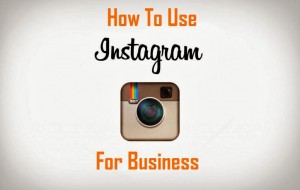In 2011, Instagram had fewer than 4.9 million users. In 2014, Instagram now boasts 200 million users. As a small business owner, or a new business owner, the thought of getting the attention of 200 million users might be overwhelming. Here are 4 tips to help you begin on your Instagram marketing strategy.
Hashtag. #Hashtags.
You can use hashtags in every Instagram post you create. Hashtags can be a very effective and efficient way to gain exposure. Unlike Twitter, you are not limited to the 140 characters per post. Include hashtags in your caption to allow your new post to be search accessible. (Don’t go hashtag crazy or you will seem desperate and people will fly over you…)
Make sure you include your business name in SOME of your posts. Example: I own Everlook Studios (Twitter: @EverlookStudios), my hashtags would reflect #EverlookStudios on some of my business posts. This strategy not only distinguishes your business posts, but it allows people to view all of your brand in one hashtag search.
Lastly, use general #hashtags to help people find your content. Example: I just created a new brand logo for a client – I will post it on my Instagram account and hashtag: #EverlookStudios #Logo #Branding
Engage.
This is a new buzz word in 2014. Every social media marketing strategy guide starts with the simple term – Engage. Go ahead, sit back, relax, and explore the wonderful world of Instagram by searching for #hashtags (see above). Take note of certain #hashtags that your industry businesses are using. Take note of what your customers and competition is using. See what they like, see what they post, take notes.
Find “experts” (Isn’t everyone a Social Media Expert these days???) in your specific industry and follow them. Engage in conversation with them. Like their photos. If your account comes off interesting or your engagement triggers a mutual interest make sure to engage in a conversation.
Use mentions to show appreciation to your followers, customers, friends, etc.
The majority of your posts should be made with your potential customer in mind. Post about your services. Post about what you sell. Post about your process. Make it worthwhile for a potential customer to follow you on Instagram.
Introduce your employees – this process not only gives the employee the recognition they most likely deserve, but it also humanizes your brand.
Inspire.
Post videos – Instagram has the ability to post short 15 second videos.
Post photos – People have a general curiosity of how things are made or a process of which something happens. Satisfy this need by posting photos of your process. Remember to #hashtag.
Show your creative process – Just the fact that you are on Instagram with your business is a start.
Share “behind-the-scenes” content – Use your Instagram account to share pictures of your process – Don’t post these specific pictures on any other social media site. Give the feeling of exclusivity to your followers.
Be true to your brand. Ensure that your photos and videos clearly define one attitude, personality, and vision for your brand.
Instagram Contests.
Use an Instagram Contest to spread the familiarity of your brand and reach a greater following. Instagram contests are popular because they are easy enough for people to participate in plus the reward to win the contest is usually well worth the time. (The prize of a contest is what gives people motivation to enter. It is the most essential part of your contest)
Example:
A business will post a picture of their newest product and make the following rules:
1) Repost this picture and tag it @ftwkreations and #ftwkreations
2) Make sure you follow @ftwkreations
3) Winner will be picked on xx/xx/2014
Include contest rules in the caption of your post. Promote your contest in as many Social Media markets as accessible.
The right prize, the right timing, the right time frame (length of contest) and the right market, your contest can go viral overnight!
Remember the ultimate advertisement is to promote your winner on your and your winners’ Instagram page. Give them the fame they deserve.
Bonus Tips.
Use Google Alerts – Monitor your campaign hashtag mentions by using Google Alerts.
Post consistently.
Determine the best times to post.
Constantly engage.
Stick to your brand.
Show your human side.
How do you use Instagram as a part of your Social Media Marketing Strategy?


